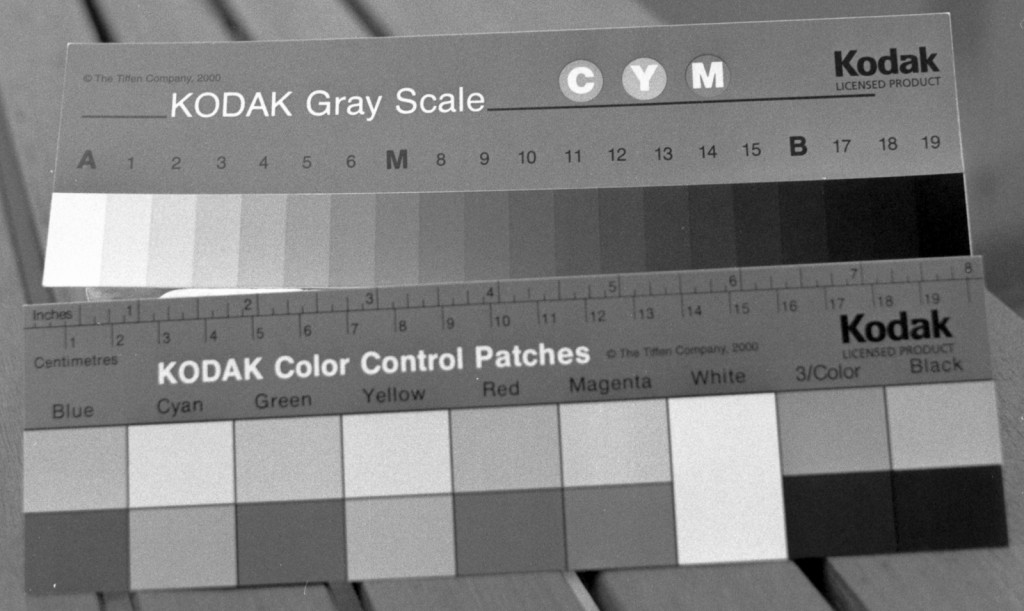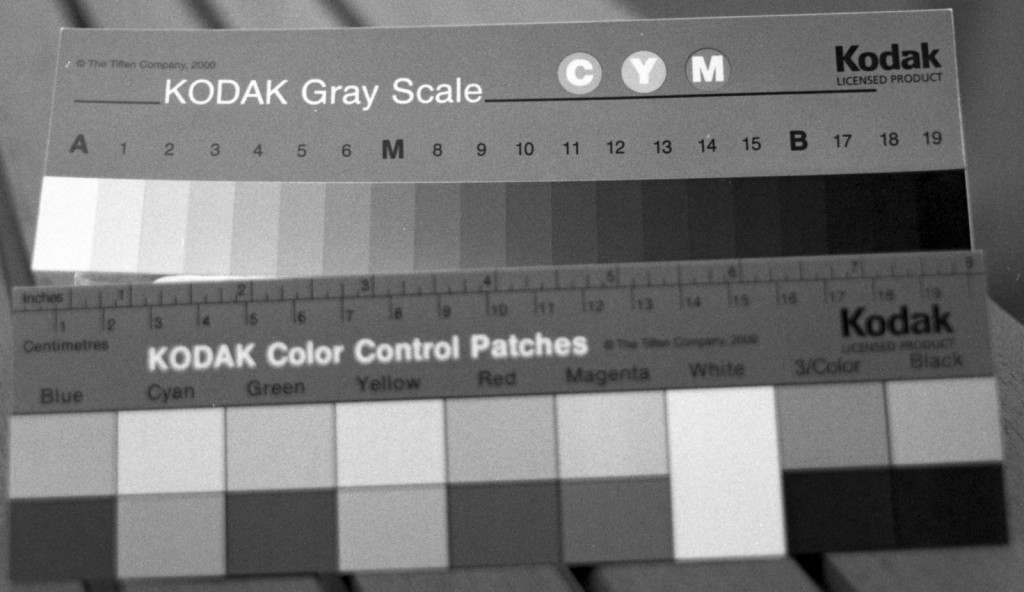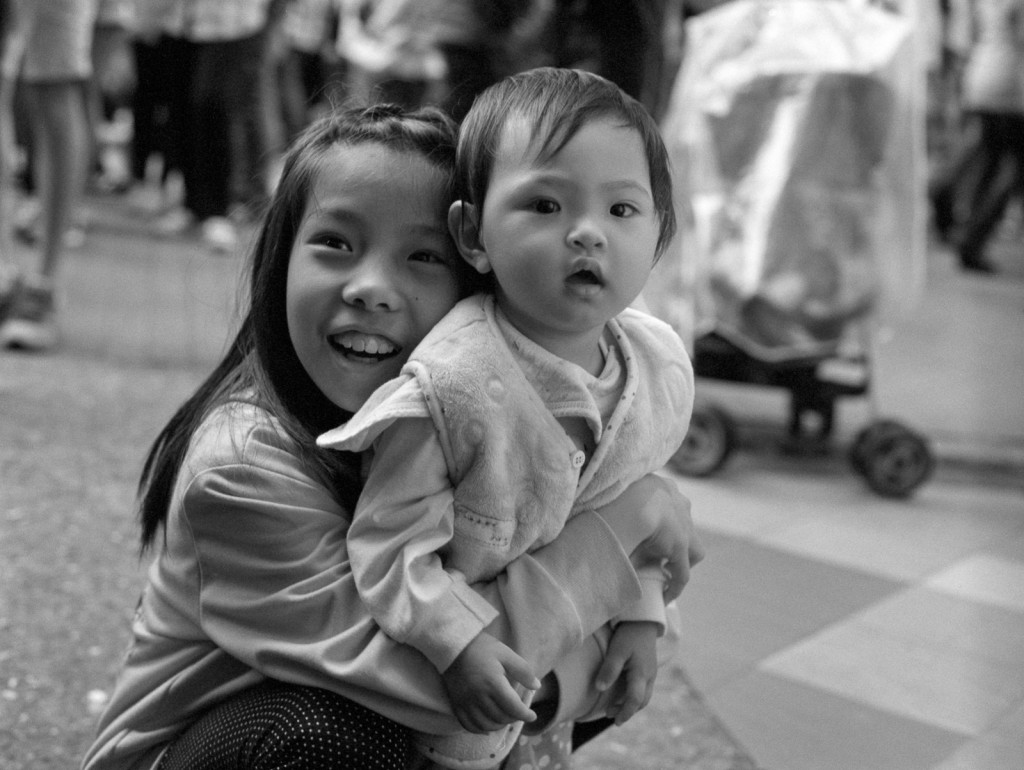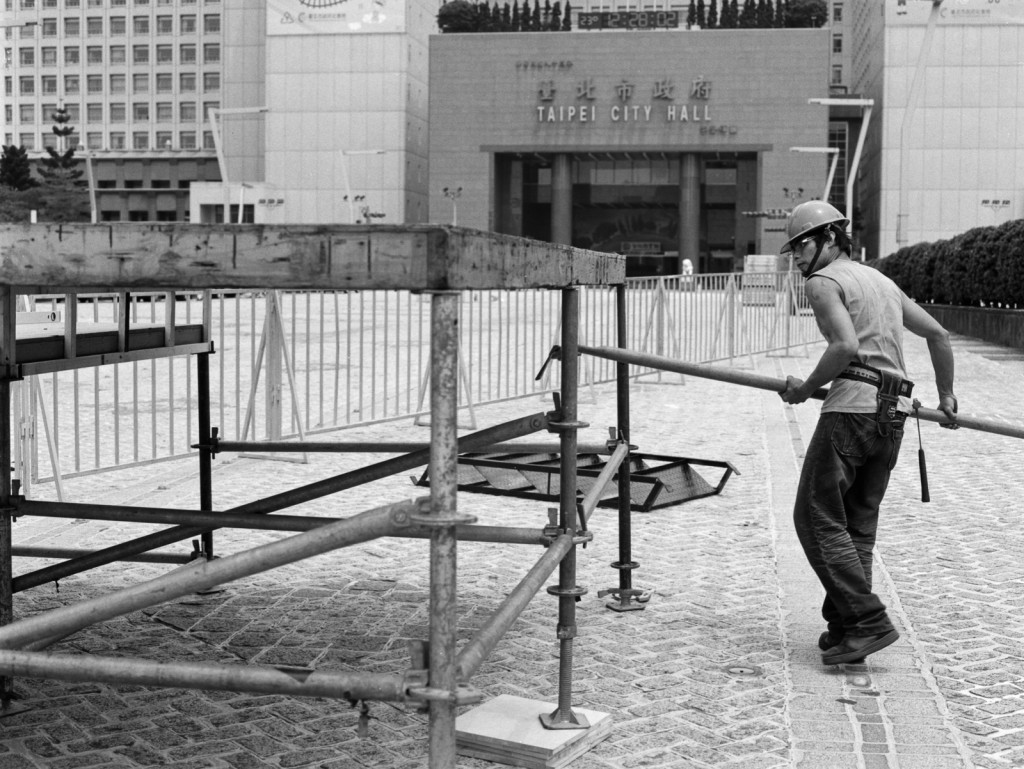The shooting
I took a gray scale and color control patches, a medium format camera, a roll of Ilford HP5+ and a standard light meter. The metering was done close to the target and in reflective mode. The light outside was flat and very even. I shot the metered value first, then -2 stops, -1stop, followed by +2 stops and finally +1 stop.
The developing, scanning and editing
The film was developed in the standard developer Tetenal Ultrafin at 20C for 13min. In general the film looked Ok and well balanced. I used a Canon 9000F and Vuescan and didn’t chop off any levels. In Adobe LR4 I moved average gray to 50%, white to about 2-4% and black to 96-98%.
The results
Here is the first image at meter reading. There is very good separation in the lights. However, the shadows especially between patches 18 and 19 are difficult to differentiate.
The next images shows the results with 2 stops underexposure. There is no problem with the separation of the highlights as well as in the previous exposure. The patches 17 -19 all fall together and there won’t be any detail in the shadows anymore. The shadows are simply underexposed. It also seems that the grain is more visible since there is more stress on it in post-processing.
Best shadow detail and separation is achieved with overexposure. The sample exposed with +2 stops shows a clear difference between patches 17,18 and 19 while the highlights are still not totally blown out.
The conclusion
We were taught by Ansel Adams to expose for the shadows and I think this still holds up today. The question is should we really develop for the highlights? If the plan is to scan the film after developing it, you don’t need to care too much about your highlights since the digitalization process got enough latitude for lights and has its weakness in the shadows.
Similar Posts:
- Film talk – HP5+ pulled to ISO100
- First look: Tetenal Ultrafin T-Plus
- A modern yet retro film – Rollei Retro 80s
- India – the places – top ten
- taking the hasselblad to a concert




